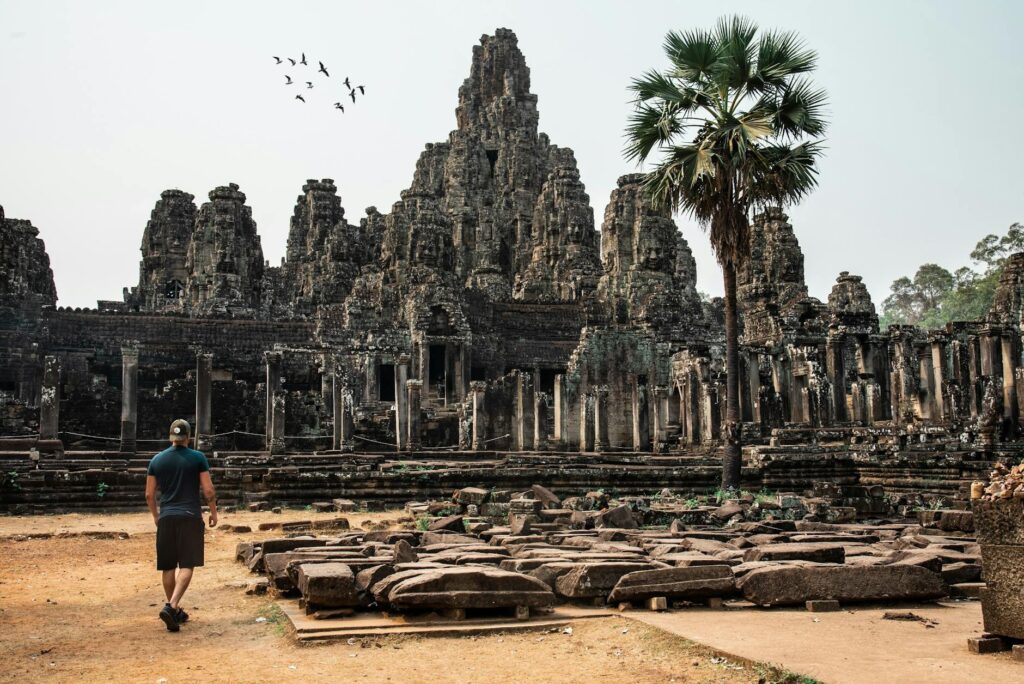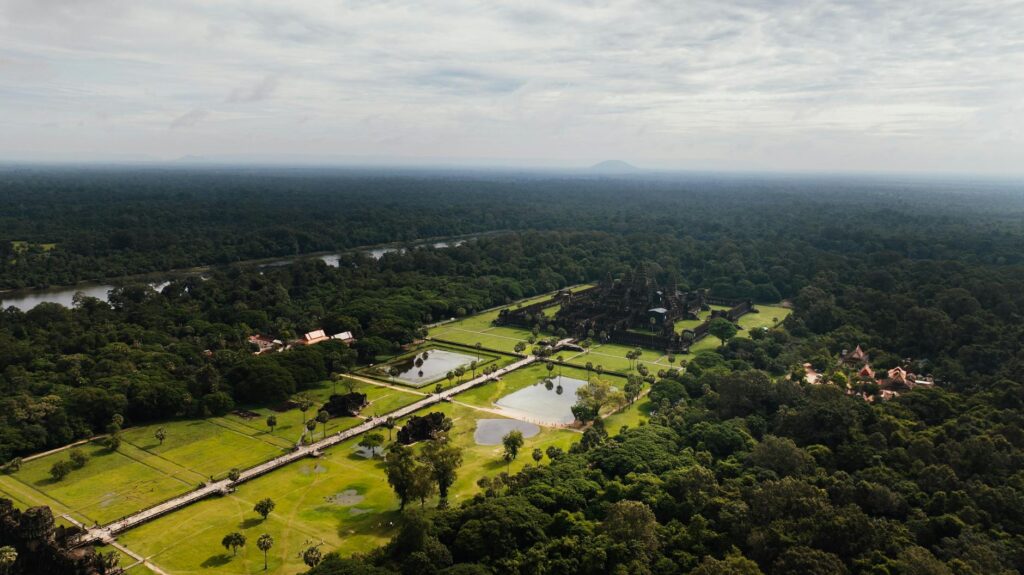Angkor Wat, a name whispered with reverence by history buffs and travel enthusiasts alike, isn’t just a temple; it’s an experience. This sprawling complex in Cambodia is more than a monument; it’s a testament to a glorious empire, a breathtaking feat of Khmer architecture, and a spiritual journey waiting to be explored. Prepare to be captivated by its magnificence.
A History Etched in Stone
Construction of Angkor Wat, which began in the early 12th century during the reign of King Suryavarman II, took decades to complete. Initially conceived as a Hindu temple dedicated to the god Vishnu, it later transitioned to a Buddhist site. The sheer scale of the project, involving thousands of workers and highly skilled artisans, is awe-inspiring.  Learning about its construction methods offers a fascinating glimpse into the ingenuity of the Khmer civilization. Read more about the construction techniques used.
Learning about its construction methods offers a fascinating glimpse into the ingenuity of the Khmer civilization. Read more about the construction techniques used.
Architectural Marvels
The temple’s design is a masterpiece of symmetry and proportion. Its five towers, representing the mythical Mount Meru, the home of the gods, are breathtaking. The intricate bas-reliefs adorning the walls depict scenes from Hindu mythology, showcasing the artistic prowess of the Khmer sculptors.  Exploring the galleries and courtyards reveals a stunning display of architectural details, from the towering central prang to the smaller shrines scattered throughout the complex. Find out more about the architectural details here.
Exploring the galleries and courtyards reveals a stunning display of architectural details, from the towering central prang to the smaller shrines scattered throughout the complex. Find out more about the architectural details here.
Beyond the Stone: Religious Significance
Angkor Wat holds immense spiritual significance, having served as both a Hindu and Buddhist temple. The transition reflects the shifting religious landscape of the Khmer Empire. Even today, the temple continues to serve as a place of worship for some, further adding to its enigmatic allure. Understanding this religious context enriches the visitor’s experience. Learn more about its religious significance here.
Exploring Angkor: Tips for Your Visit
Planning a visit to Angkor Wat? It’s advisable to allocate at least a full day to fully appreciate the site’s grandeur. The best time to visit is during the dry season (November to March). Remember to wear comfortable shoes, bring sunscreen, and stay hydrated, especially during the hotter months. [IMAGE_3_HERE] Consider hiring a local guide for a deeper understanding of the history and significance of the place. You can also explore other temples in the Angkor Archaeological Park such as Angkor Thom and Bayon.Read more practical tips here.
A Legacy for Generations
Angkor Wat is more than just a stunning temple; it’s a living testament to the richness and resilience of the Khmer culture. Its enduring legacy continues to inspire awe and wonder. It’s a site that speaks volumes about the Khmer people’s history, artistry, and deep-seated spirituality. The scale and level of preservation are absolutely remarkable, thanks in part to organizations like UNESCO, which help preserve world heritage sites. It serves as a powerful reminder of the importance of preserving our cultural heritage. [IMAGE_4_HERE]
Visiting Angkor Wat is a journey through time, a celebration of human ingenuity, and a profound spiritual experience. Its magnificence leaves an indelible mark on the visitor, ensuring that the memories created here will last a lifetime. For more information, check out the official tourism website: Cambodia Tourism.
Frequently Asked Questions
What is the best time to visit Angkor Wat? The best time to visit is during the dry season (November to March), when the weather is pleasant and less humid.
How long should I spend at Angkor Wat? You should ideally allocate at least a full day to explore the temple complex fully.
How can I get to Angkor Wat? You can get there from Siem Reap by taxi, tuk-tuk, or bicycle. Google maps can provide directions.
Are there any guided tours available? Yes, many guided tours are available, offering a deeper understanding of the temple’s history and significance.
What should I wear to visit Angkor Wat? Dress respectfully; shoulders and knees should be covered.

